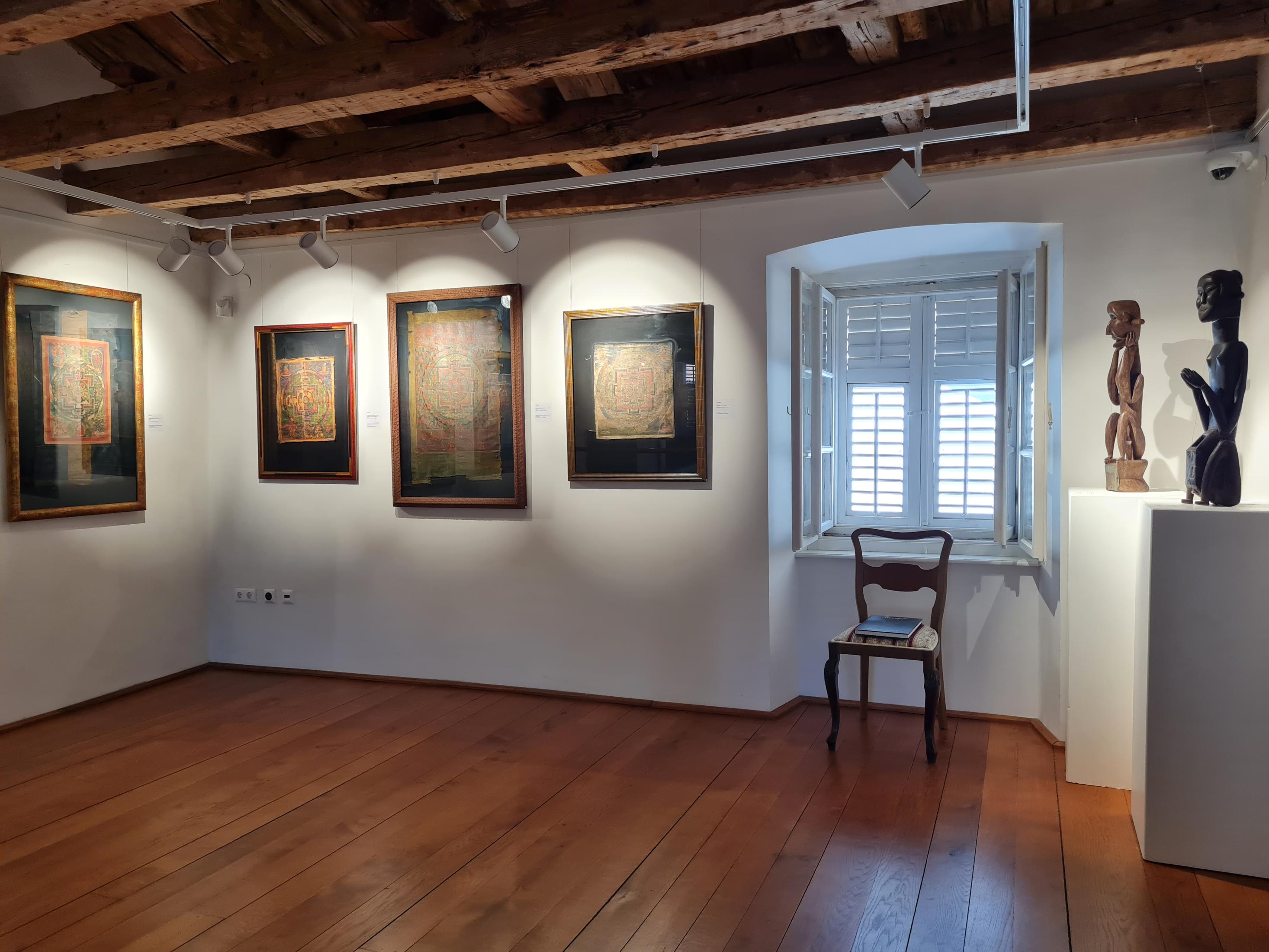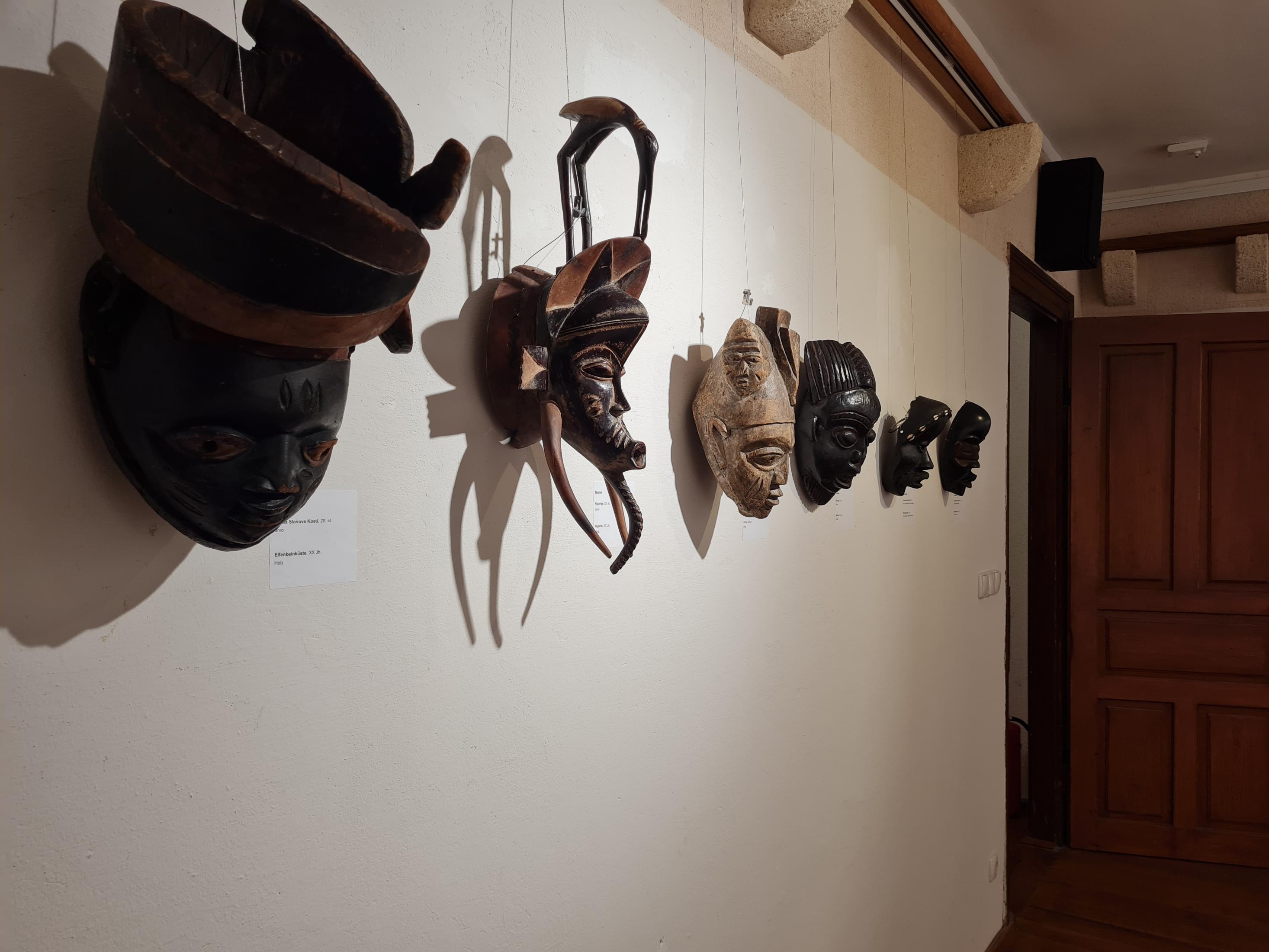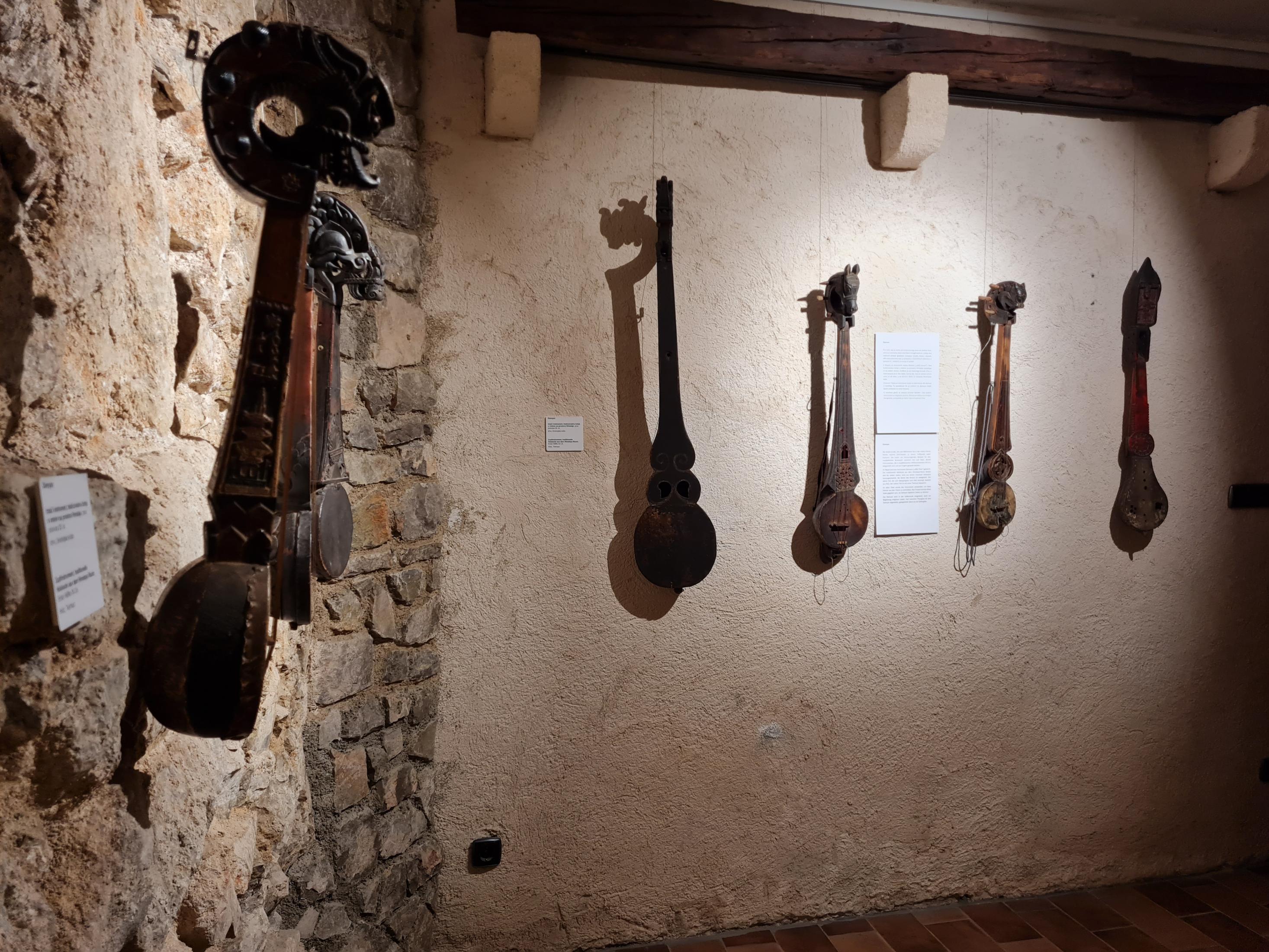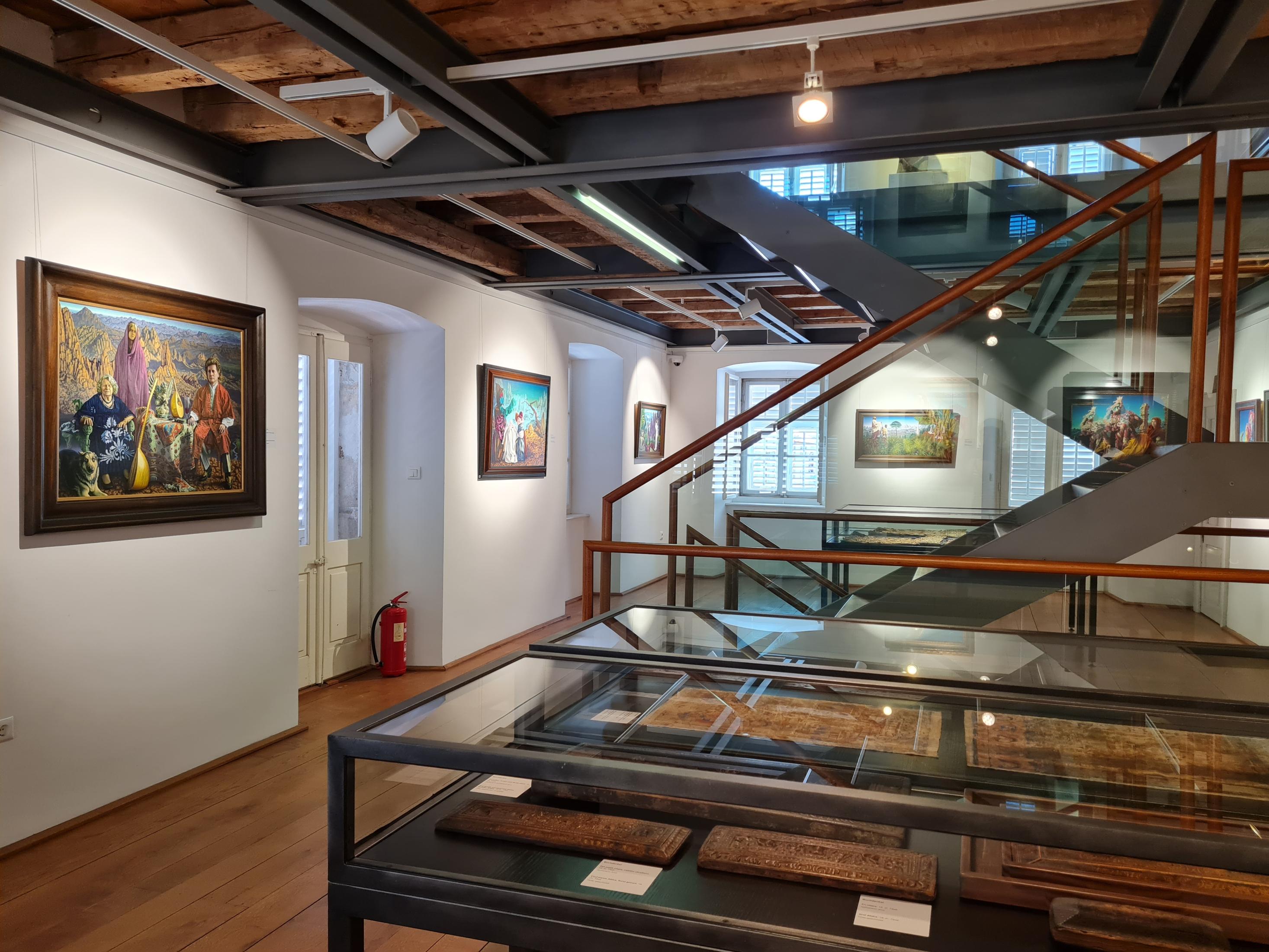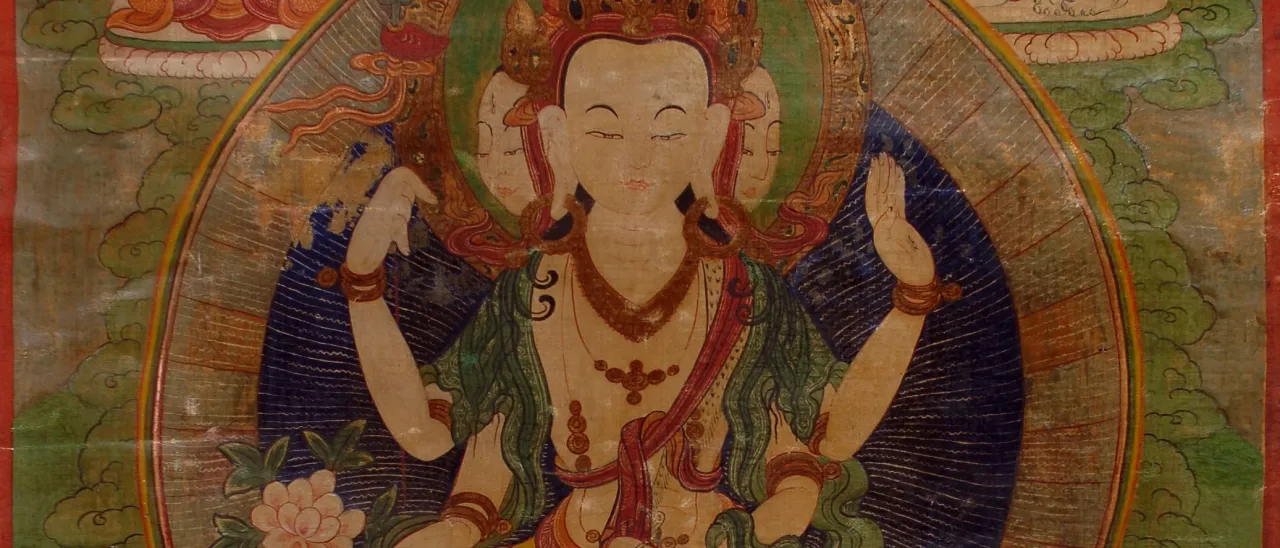
ART & SOUND
Created by laymen and of impressive quality, the works of art in the exhibition "Art & Sound" span several centuries. The objects follow a predefined iconographic pattern and are loaded with symbolism without being primarily a creative expression of the painter. They quench the viewer's thirst for the unknown.
An outstanding example are the Tibetan scroll images of religious content (so-called thangkas). Painted on linen or silk, the thematic arc spans from icons of historical personalities to the pantheon of Tibetan Buddhism to complex religious-philosophical illustrations.
These works are seen as a valuable window through which one can look into an enlightened dimension. The historical Buddha pointed to a path to deal with the imperfection and suffering of human existence. His findings were passed on in the form of his teachings in order to first examine them and then apply them to oneself.
In Tibetan Buddhism, man and nature are not separate principles. There is a constant exchange between the human sphere and that of the gods and spirit beings. This magical interweaving is reflected in the meditation images.
However, it is not the pigments, the harmonious coloring or the particularly fine painting style that determine the value of this type of painting, but its sacral effectiveness. A Tibetan image only gains life through a complicated consecration ceremony. Only through the consecration, does the deity depicted on it take its seat in it and "animate" it.
"Painting is not an aesthetic endeavor, it is a form of magic," Pablo Picasso also said. European artists became aware of non-European art at the beginning of the 20thcentury and learned to appreciate the formal language of tribal art from Africa and Oceania. It is an aesthetic that is simple, expressive and independent of the canon of Western art. Tribal art is considered powerless, like a blank canvas, until it is spiritually charged by priests or shamans. Full of magic, this art is a medium for the presentation and transmission of content, a mediator between past, present and future.
If one excludes tradition and prior knowledge from the exhibited objects, the Western-influenced aesthetic experience is primarily addressed. The originality remains important – a work not influenced by fashions of the 20thcentury, which requires the receptive development of Western culture in order to be recognized as art.
Other accents of the exhibition are ethnic instruments such as the kora, a harp from West Africa, and the damyan, a neck lute from the Himalayan region, created by the musical exchange between East and West. Several ethnic instruments such as the oud, a short-necked lute from the Middle East, as well as the traditional Chinese instruments Pipa and Erhu are equipped with Thomastik-Infeld strings.

